Vous devez être connecté
-
WróćX
-
Composants
-
-
Category
-
Semi-conducteurs
- La diode
- Les thyristors
- Modules de puissance isolés
- Ponts redresseurs
-
Transistors
- Transistors | GeneSiC
- Modules MOSFET SiC | Mitsubishi
- Modules MOSFET SiC | STARPOWER
- Modules MOSFET SiC ABB
- Modules IGBT | MITSUBISHI
- Modules de transistors | MITSUBISHI
- Modules MOSFET | MITSUBISHI
- Modules de transistors | ABB
- Modules IGBT | POWEREX
- Modules IGBT | INFINEON (EUPEC)
- Composants semiconducteurs en carbure de silicium
- Przejdź do podkategorii
- Circuits de commande
- Blocs de puissance
- Przejdź do podkategorii
- Transducteurs électriques
-
Composants passifs (condensateurs, résistances, fusibles, filtres)
- Résistances
-
Fusibles
- Fusibles miniatures pour c.imp. série ABC et AGC
- Fusible rapides tubulaires
- Cartouches de courbe GL/GG et AM
- Cartouches ultrarapides
- Fusibles à action rapide (norme britannique et américaine)
- Fusibles à action rapide (norme européenne)
- Fusibles de traction
- Cartouche de haute tension
- Przejdź do podkategorii
-
Condensateurs
- Condensateurs pour moteurs
- Condensateurs électrolitiques
- Condensateurs de type snubbers
- Condensateurs de puissance
- Condensateurs pour circuits continus
- Condensateurs de compensation de puissance
- Condensateurs de haute tension
- Condensateurs pour chauffage par induction
- Condensateurs pour impulsions
- Condensateurs DC LINK
- Condensateurs pour circuits AC/DC
- Przejdź do podkategorii
- Filtres anti-interférences
- Supercondensateurs
- Protection contre les surtensions
- Filtres de détection des émissions TEMPEST
- Parafoudre
- Przejdź do podkategorii
-
Relais et contacteurs
- Théorie relais et contacteurs
- Relais statiques triphasés
- Relais statiques CC
- Régulateurs, circuits de commande et accessoires
- Démarrages progressifs et contacteurs inverseurs
- Relais electromécaniques
- Contacteurs
- Commutateurs rotatifs
-
Relais statiques monophasés
- Relais semi-conducteurs AC monophasés, série 1 | D2425 | D2450
- Relais à semi-conducteurs CA monophasés, séries CWA et CWD
- Relais à semi-conducteurs CA monophasés des séries CMRA et CMRD
- Relais à semi-conducteurs CA monophasés, série PS
- Relais semi-conducteurs AC double et quadruple, série D24 D, TD24 Q, H12D48 D
- Relais statiques monophasés, série GN
- Relais à semi-conducteurs CA monophasés, série CKR
- Relais AC monophasés SÉRIES ERDA ET ERAA pour rail DIN
- Relais CA monophasés pour courant 150A
- Relais à semi-conducteurs doubles intégrés à un dissipateur thermique pour un rail DIN
- Przejdź do podkategorii
- Relais statiques monophasé pour c.imp.
- Relais d'interface
- Przejdź do podkategorii
- Composants inductifs
- Radiateurs, varistances, protections thermiques
- Ventilateurs
- Climatiseurs et accessoires d'armoires électriques
-
Batteries, chargeurs, blocs d'alimentation tampon et onduleurs
- Batteries et Chargeurs - théorie
- Batteries Li-ion et non-standards. Systèmes de gestion des batteries (BMS)
- Batteries
- Chargeurs de batteries et accessoires
- Alimentation de secours UPS et alimentation tampon
- Convertisseurs de tension et accessoires pour photovoltaïque
- Stockage d'Energie
- Réservoirs de carburant
- Batteries lithium-ion
- Przejdź do podkategorii
-
Automatique industrielle
- Élévateurs Spiralift
- Pièces pour drones Futaba
- Interrupteurs de fin de course, micro-rupteurs
- Capteurs et convertisseurs
- Pyromètres
- Compteurs, Relais temporisés, Indicateurs de tableau
- Appareils industriels de protection
- Signalisation lumineuse et sonore
- Caméra thermique
- Afficheurs à LED
- Boutons et commutateurs
- Przejdź do podkategorii
-
Câbles et chemins de câbles
- Fils
- Passe-câbles et coupleurs
- Fils de Litz
- Câbles pour les applications spéciales
- Gaines
-
Tresses
- Tresses plates
- Tresses rondes
- Tresses très souples - plates
- Tresses très souples - rondes
- Tresses cuivre cylindriques
- Tresses cuivre cylindriques et protection
- Bandes de mise à la terre souples
- Tresses en acier zingué et inox
- Tresses isolantes en PVC - temp. 85°C
- Tresses plates en aluminium
- Kit de liaison - tresses et gaines
- Przejdź do podkategorii
- Equipement pour la traction
- Cosses
- Barres flexible isolées
- Barre flexibles multicouches
- Systèmes de traçage des câbles
- Przejdź do podkategorii
- Contactez-nous !
-
Semi-conducteurs
-
-
- Fournisseurs
-
Applications
- Alimentations (UPS) et systèmes de redressement
- Automatisation HVAC
- Automatisation industrielle
- Chauffage par induction
- Composants pour atmosphères potentiellement explosives (EX)
- Dispositifs de protection industriels
- Énergétique
- Energy bank
- Équipements pour armoires de distribution, de contrôle et de télécommunications
- Impression
- Machines à souder et machines à souder
- Machines de séchage et de traitement du bois
- Machines pour le thermoformage des plastiques
- Machines-outils CNC
- Mesure et régulation de la température
- Mesure et régulation de la température
- Mines, métallurgie et fondation
- Moteurs et transformateurs
- Traction de tram et de chemin de fer
- Variateurs CA et CC (onduleurs)
-
Installation
-
-
Inducteurs
-
-
Appareils à induction
-
-
Service
-
- Contact
- Zobacz wszystkie kategorie
Technologies d’éclairage industriel

Éclairage industriel – importance et applications
L'éclairage industriel est l'un des éléments les plus importants de l'équipement des ateliers de production, des bureaux, des entrepôts et des postes de travail pour machines. Il complète la lumière naturelle, permet de prolonger les heures de travail, de mettre en place le travail en équipes et a un impact positif sur la santé et la vision des employés. En même temps, ce facteur est tellement évident que l'on l'oublie souvent.
Le choix d'un éclairage adapté à l'industrie nécessite de prendre en compte de nombreux facteurs, tels que les conditions environnementales, le niveau de lumière naturelle, le type d'équipement, les exigences financières, les objectifs de l'entreprise, le type de travail effectué et plus encore.
L'éclairage industriel, en plus d'éclairer les ateliers de production ou les entrepôts, comprend également un éclairage supplémentaire, comme les issues de secours, l'éclairage extérieur ou périphérique, ainsi que l'éclairage pour les tests ou les processus de production spécifiques. Un éclairage approprié augmente l'efficacité du travail, réduit la fatigue oculaire et influence le bien-être des employés.
Avantages d’un éclairage industriel correctement choisi
Selon le résultat souhaité et le profil de l'entreprise, différents types de lumière peuvent provoquer différentes sensations : la lumière froide stimule le travail, la lumière chaude détend, et une intensité lumineuse mal choisie peut accroître la fatigue et le découragement.
Principaux avantages de l'éclairage industriel :
- économie des coûts de maintenance,
- sécurité des personnes, des machines et des produits dans l'entrepôt,
- réduction de la fatigue des employés et augmentation de l'efficacité, de la concentration et de la vigilance,
- prévention des perturbations du rythme circadien,
- réduction du nombre d'accidents dans l'usine.
Consommation d'énergie et sécurité de l'éclairage industriel
Dans les grands entrepôts et ateliers de production ouverts 24h/24, le coût de l'éclairage et de l'entretien des équipements représente un défi particulier dans de telles installations énergivores.
Moyens de réduire les coûts d'éclairage industriel :
- lampes à faible consommation d'énergie,
- systèmes de contrôle de l'éclairage – extinction automatique des lampes dans les pièces inoccupées ou ajustement à la lumière naturelle,
- systèmes de variateurs et minuteurs,
- détermination des températures appropriées dans l'usine,
- utilisation d'éclairage sans entretien et longue durée de vie.
L'utilisation de l'éclairage en milieu industriel entraîne l'accumulation de poussière et de saleté sur les lampes. Selon le secteur industriel, des particules dangereuses telles que liquides de refroidissement, huiles, graisses, copeaux et étincelles peuvent également être présentes. Il est donc important d'assurer le niveau d'étanchéité approprié et le matériau du luminaire, comme le verre acrylique ou le polycarbonate.
Éclairage dans une installation industrielle – points importants
Caractéristiques clés des sources lumineuses :
- Temps pour atteindre la luminosité maximale – de quelques secondes à plusieurs minutes.
- Temps de redémarrage – certaines lampes doivent refroidir avant de pouvoir être rallumées.
- Possibilité de gradation et positionnement correct – certains types de lampes nécessitent une position spécifique.
Dans les ateliers, des obstacles peuvent limiter le flux lumineux. Il est également important de disposer correctement les lampes pour ne pas éblouir les employés et ne pas perturber le fonctionnement des équipements. Un mauvais positionnement peut provoquer un effet stroboscopique, dangereux avec les machines rotatives. Des lampes bien disposées augmentent la sécurité et permettent une évacuation rapide.
Éclairage industriel pour applications spécifiques
L'éclairage industriel approprié n'est pas seulement utilisé pour éclairer de grandes surfaces, mais aussi des postes de travail, des machines et des équipements, par exemple :
- stations de montage et machines,
- stations de contrôle qualité,
- panneaux électriques et stations robotisées,
- surveillance des processus de production,
- zones de maintenance des équipements.
Industrie alimentaire
Dans l'industrie alimentaire, l'aspect le plus important de l'éclairage est l'hygiène. Les lampes doivent être faciles à nettoyer et à désinfecter, en acier inoxydable, étanches et résistantes aux produits chimiques et aux jets d'eau chaude sous pression. Elles doivent également être fabriquées à partir de matériaux incassables, résistants aux chocs et aux températures, et ne pas affecter la couleur des aliments. Dans les zones chimiques, la résistance à l'explosion est également requise.
Zones à risque d'explosion (Ex)
Dans les zones où une atmosphère explosive peut se produire, les luminaires doivent répondre à des exigences particulières. Un certificat ATEX est nécessaire, spécifiant la catégorie de l'appareil, le mode de protection, le groupe gaz/poussière et la classe de température.
Les meilleures sources lumineuses pour l'industrie
Le choix de la source lumineuse doit être conforme aux recommandations de l'UE, qui imposent l'utilisation de solutions économes en énergie. Dans l'industrie, les technologies plus anciennes sont encore utilisées, mais les LED modernes dominent.
Types de sources lumineuses :
- lampes thermiques – ampoules, halogènes (actuellement interdites dans l'UE),
- lampes à décharge – par exemple fluorescentes et HID,
- sources à semi-conducteurs – LED.
Lors du choix de l'éclairage, il faut prendre en compte les paramètres : flux lumineux (lm), intensité, illumination, luminance, durabilité, couleur de la lumière et indice de rendu des couleurs.
LED dans l'industrie
Les LED sont devenues un standard dans l'industrie et le commerce. Elles utilisent le phénomène de l'électroluminescence, c'est-à-dire l'émission de lumière sous l'effet du courant électrique.
Avantages des LED :
- haute efficacité et intensité lumineuse,
- longue durée de vie même en fonctionnement continu,
- éclairage immédiat à l'allumage,
- pas besoin de refroidissement avant réactivation,
- gradation et sélection des LED possibles,
- résistance aux vibrations et aux chocs,
- fonctionnement à basses températures,
- réduction des coûts énergétiques et d'entretien,
- impact environnemental réduit,
- augmentation de la sécurité et de la productivité au travail.
Le seul inconvénient des LED est leur sensibilité aux températures élevées, mais des systèmes bien conçus garantissent une grande durabilité. La technologie LED peut être intégrée à des systèmes intelligents de gestion de l'éclairage, capteurs de lumière du jour et contrôle à distance de la luminosité et du temps de fonctionnement.
À l'avenir, de nouvelles technologies pourraient révolutionner le marché, mais l'éclairage reste un élément clé de la vie quotidienne – au travail et à la maison. Il est donc important que les lampes soient correctement sélectionnées, durables et conformes aux normes.
Produits associés
Articles similaires
 Nanuk protection cases - perfect solution for work in difficult conditions
Nanuk protection cases - perfect solution for work in difficult conditions
 Power supply management
Power supply management
 Wireless communication
Wireless communication




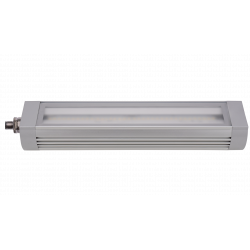
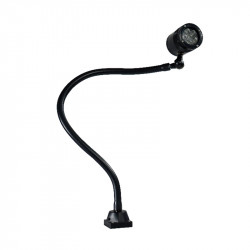
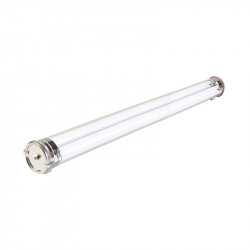
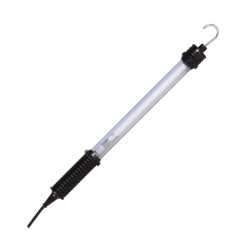
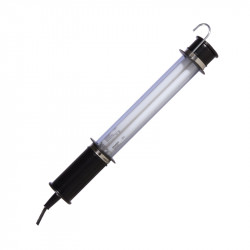
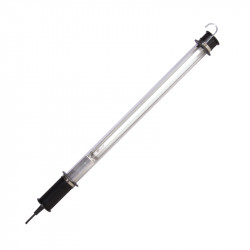
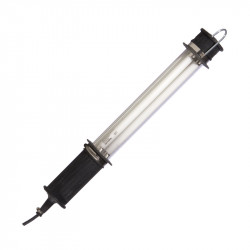
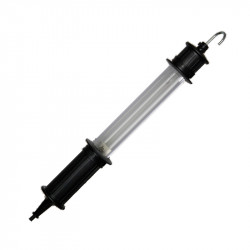
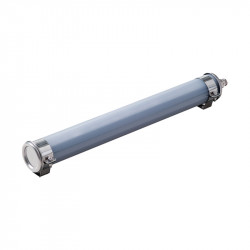
Laissez un commentaire